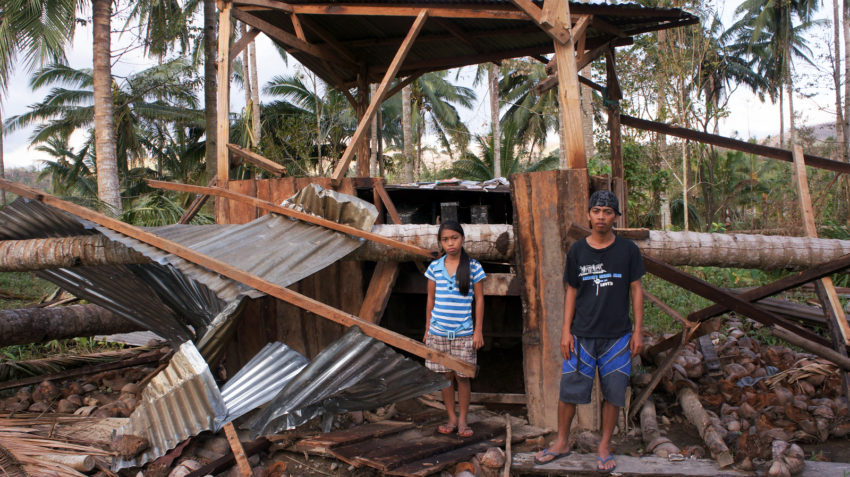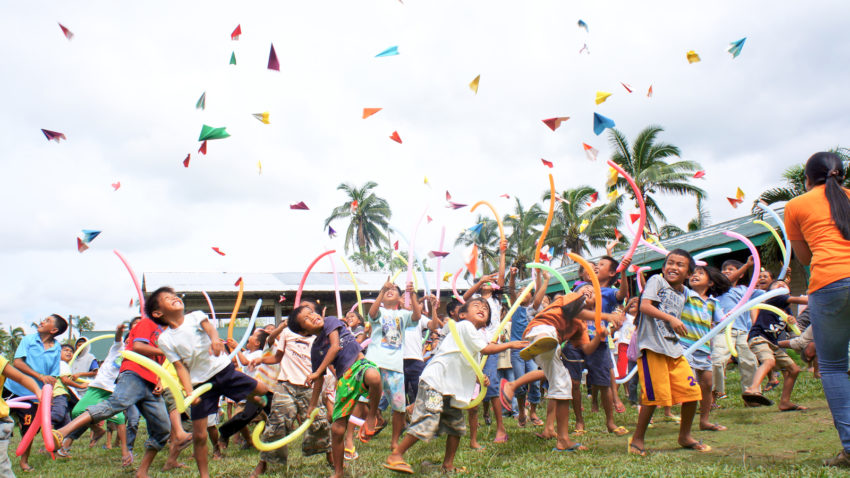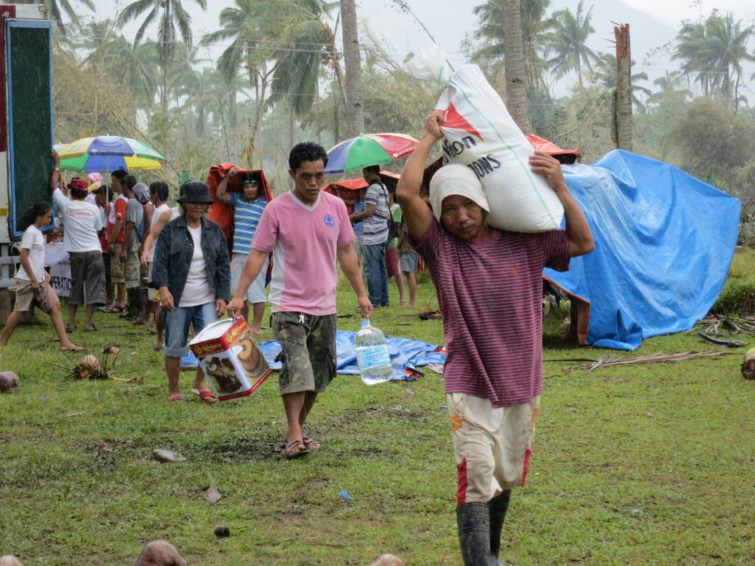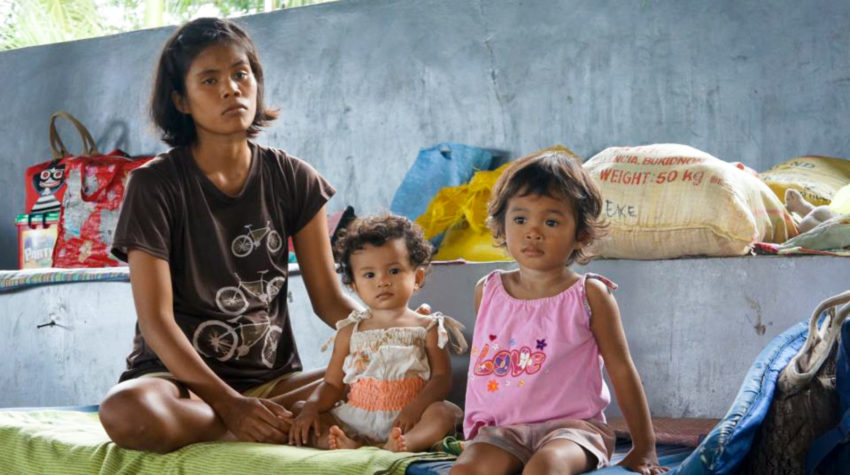Typhoon Bopha made landfall the evening of Dec. 3, 2012, onBaganga, Mindanao in the Philippines. With sustained winds above 175 mph, the Category 5 storm was the strongest to ever hit the southern Philippine islands and the strongest to hit the country until the record-breaking superstorm, Typhoon Haiyan, in 2013.
Typhoon Bopha followed a similar path to that of Tropical Storm Washi, which killed more than 1,200 people and left thousands homeless only a year before. But Bopha was a much stronger storm. Though more than 170,000 people evacuated to storm shelters, the death toll from Typhoon Bopha topped 1,000 people.
You can deliver hope and practical help when disasters strike.
2012 Typhoon Bopha timeline
Nov. 23: A weather system emerges in Micronesia, but is perceived as having little chance of developing into a significant weather system.
Nov. 30: Now a named storm, Bopha is upgraded to a severe tropical storm. Then, a few hours later it becomes a typhoon as its wind speed increases.
Dec. 2: Bopha strengthens to a super typhoon with sustained wind speeds of at least 150 mph. Later it develops a double eyewall as the whirling band of thunderstorms that surround the calmer eye increases. This is a sign that the storm is intensifying.
Dec. 3: At 9 p.m. Bopha makes landfall over Baganga, Mindanao, as a Category 5 super typhoon.
Dec. 4 to 6: After raking across Davao Oriental and Compostela Valley provinces, Typhoon Bopha crosses into the southern and central regions of Mindanao, downing power lines and triggering landslides.
Dec. 7 to 9: Bopha begins to strengthen again, but as it moves to the South China Sea and west of Palawan island province, it dissipates.
FAQs: What you need to know about Typhoon Bopha
Learn more about the historic force of Typhoon Bopha and how to help people in the Philippines.
- Fast facts: Mindanao and Typhoon Bopha
- What’s the difference between a typhoon and a tropical storm?
- Why is Typhoon Bopha also called Typhoon Pablo?
- Is the Philippines a disaster-prone country?
- How can I help children and families in the Philippines?
- How did World Vision respond to Typhoon Bopha?
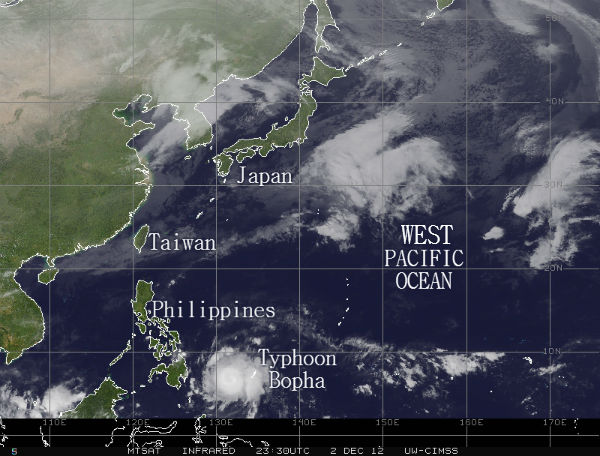
Fast facts: Mindanao and Typhoon Bopha
- Typhoon Bopha was the strongest storm to ever hit Mindanao in the southern Philippines.
- Mindanao has been plagued by armed conflict for decades and is consistently the poorest region in the Philippines, ill able to withstand economic losses from disasters.
- A year before Typhoon Bopha, Mindanao was hit by Tropical Storm Washi. Many families lost everything and had not recovered when Bopha came calling.
What’s the difference between a typhoon and a tropical storm?
The difference between a typhoon and a tropical storm is wind speed.
Tropical storms are extremely low-pressure areas over the ocean with winds rotating around a central point, like in a washing machine. Tropical storms are very strong thunderstorms; they are called tropical storms because they usually develop in the tropics.
When a tropical depression gets enough steam for its winds to clock between 39 and 73 mph, it’s a tropical storm. When it passes 74 mph — and it’s in the Atlantic or Northeast Pacific, it’s upgraded to a hurricane. Typhoons, like Bopha, are the same as hurricanes, but they are found in the Northwest Pacific Ocean. Find out more about hurricanes, cyclones, and typhoons.
Why is Typhoon Bopha also called Typhoon Pablo?
The Japanese Meteorological Agency names new typhoons from a list of 140 names submitted by countries in the region, including China, Vietnam, Cambodia, and the Philippines. But when a typhoon approaches the Philippines, it gets a local name provided by the Philippine Atmospheric, Geophysical, and Astronomical Services Administration based on four rotating lists of 25 names. The storm that everyone else called Typhoon Bopha, they named Typhoon Pablo.
Is the Philippines a disaster-prone country?
The Philippines is one of the most disaster-prone countries in the world. Not only is it at risk for disastrous weather events, it is in a hot zone for earthquakes, volcanos, and tsunamis since it sits on the Pacific’s Ring of Fire.
Landslides, floods, and volcanic eruptions can happen to anyone, but communities with poor infrastructure and families in poverty, such as much of Mindanao, have a much more difficult time coping and recovering from emergencies compared to wealthier people and places. Because of conflict and extreme poverty, human development in several Mindanao provinces is extremely low, far below the Philippines’ average and comparable to Niger and the Central African Republic in sub-Saharan Africa. When disasters such as Typhoon Bopha strike, the extremely poor have few resources to put toward recovery.
How can I help children and families in the Philippines?
Pray for people affected by poverty and recurring disasters in the Philippines and other countries in the Asia Pacific region.
Sponsor a child in the Philippines. When you sponsor a child, you will help change a child’s life story and the life of their family and community. You’ll provide access to life-saving basics like nutritious food, healthcare, clean water, education, and more.
How did World Vision respond to Typhoon Bopha?
World Vision has worked in the Philippines since 1954, caring for children and building sustainable communities. Building resilience and preparing for disasters are two of the top aims of our long-term development programs.
Based on assessments, World Vision prioritized these relief items and activities in response to Typhoon Bopha:
- Food distributions
- Hygiene kits and household goods
- Emergency shelter supplies
- Child protection programs at Child-Friendly Spaces
In the longer term, World Vision also helped to restore families to income-earning activities through cash-for-work programs and small business loans.
